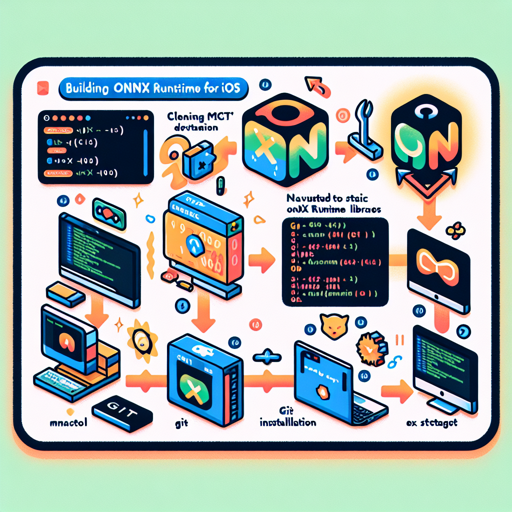In the rapidly evolving world of artificial intelligence, the ONNX Runtime is a game-changer, enabling developers to integrate ONNX models efficiently. For iOS developers looking to utilize these powerful libraries, this guide will walk you through the process of building pre-built static ONNX Runtime libraries specifically for iOS.
Prerequisites
Before diving into the building process, ensure you have the following:
- A macOS environment.
- Git installed on your machine.
- Basic familiarity with the command line.
Step-by-Step Instructions
Follow these steps to build your ONNX Runtime libraries:
bash
git clone https://github.com/microsoft/onnxruntime
cd onnxruntime
cp ../create-xcframework.sh .
cp ../run-ios-arm64.sh .
cp ../run-ios-simulator-arm64.sh .
cp ../run-ios-simulator-os64.sh .
./run-ios-arm64.sh
./run-ios-simulator-arm64.sh
./run-ios-simulator-os64.sh
./create-xcframework.sh
After executing the above commands, you should find the generated content structured in the following manner:
bash
ios-onnxruntime
├── onnxruntime.xcframework
│ ├── Headers
│ │ ├── cpu_provider_factory.h
│ │ ├── onnxruntime_c_api.h
│ │ ├── onnxruntime_cxx_api.h
│ │ └── onnxruntime_cxx_inline.h
│ ├── Info.plist
│ ├── ios-arm64
│ │ └── onnxruntime.a
│ └── ios-arm64_x86_64-simulator
│ └── onnxruntime.a
3 directories, 7 files
Understanding the Build Process with an Analogy
Think of the build process as assembling a toy from a construction kit. Each script you use represents a specific tool needed to create parts of the toy. Here’s how it breaks down:
- git clone: This is like opening the construction kit and laying out all the pieces you need on the table.
- cd onnxruntime: Here, you’re selecting the specific box within the kit that contains the items you need to create your desired toy.
- cp: Copying the scripts is akin to gathering the instructions and tools from other parts of your house to assist in your current task.
- ./run-ios-arm64.sh: This is akin to starting the assembly process for one type of model or configuration of your toy.
- ./create-xcframework.sh: Finally, this is like putting the final pieces together, ensuring that you have a fully functional toy that can be displayed on your shelf (i.e., your iOS app).
Troubleshooting
Sometimes things don’t go as planned. If you encounter issues during the build process, here are some troubleshooting tips:
- Ensure that you have the correct permissions to run the scripts. Try using
chmod +xto make scripts executable. - Verify that all scripts are correctly copied and that you’re in the right directory.
- Check for any error messages in the terminal, as they often provide clues on what went wrong.
- If you run into version issues, make sure your local environment mirrors the project’s specifications.
For more insights, updates, or to collaborate on AI development projects, stay connected with fxis.ai.
Conclusion
By following these steps, you should now have a robust ONNX Runtime library tailored for iOS, ready to enhance your AI applications. Remember, practice makes perfect—don’t hesitate to experiment with different configurations and workflows.
At fxis.ai, we believe that such advancements are crucial for the future of AI, as they enable more comprehensive and effective solutions. Our team is continually exploring new methodologies to push the envelope in artificial intelligence, ensuring that our clients benefit from the latest technological innovations.

